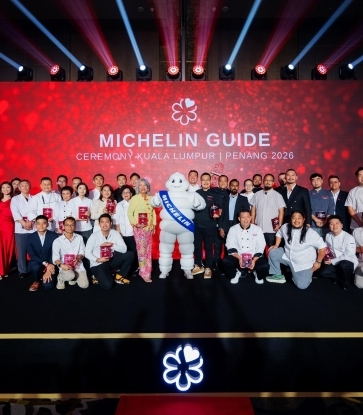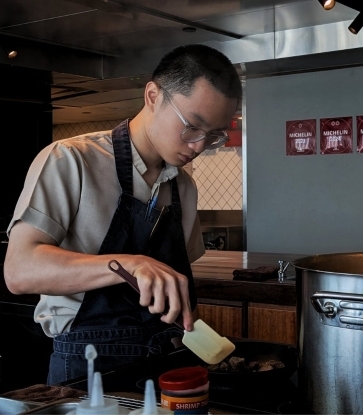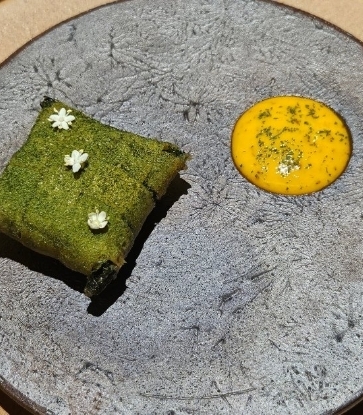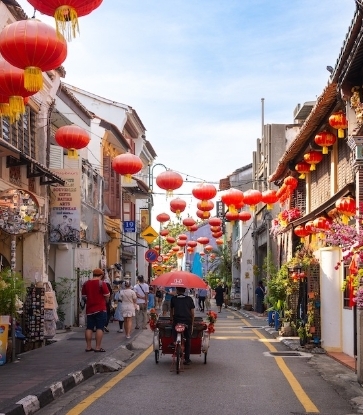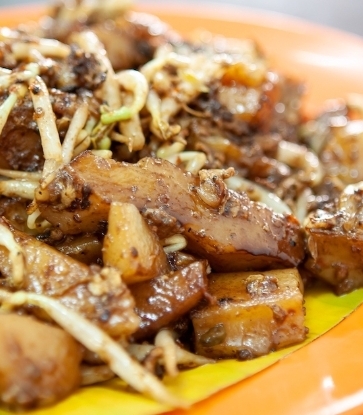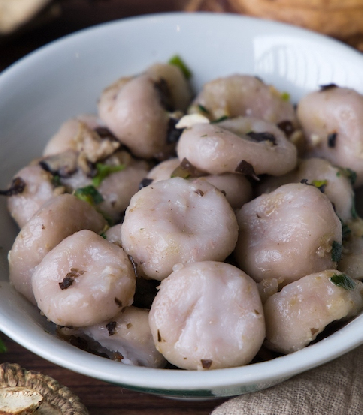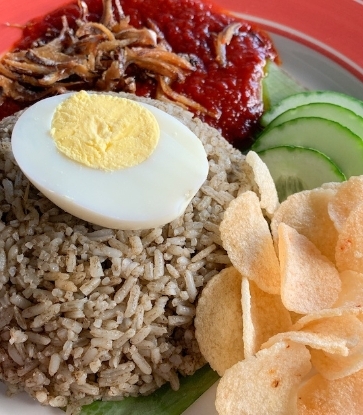Penang’s Peranakan cuisines — both Nyonya as well as Jawi Peranakan — are some of the earliest examples of cooking where different culinary cultures meet. They start influencing and counter-influencing each other until they’re all so braided, one simply can’t extricate the strands.
Fun fact: the French had also experienced such culinary hybridisation when centuries of trade with North Africa gave rise to dishes like Marseille’s bouillabaisse, which incorporated spices like saffron; and the Languedoc cassoulet, a distant cousin of Arabic meat and bean stews.
In this region of Malaysia, ever since its founding by the British East India Company in 1786, Penang had been a colourful emporium where different people meet: Arabs, Acehnese, Persians, Indians, Chinese, the Siamese, and, their great adversaries, the Burmese. For all these sojourners-turned- émigrés, British Penang was like a shining beacon of hope and possibility, a veritable marketplace where profits could be made and dreams of a better life were realised.

The Straits Chinese of Penang
From North Sumatra, and its mercantile cities of Acheh and Medan, came the Hokkien merchants, weary of high Dutch taxes and the absence of law and order. They sought British assurance of a peaceful, secure environment to do business. Circumstances dictated that most of these early emigrants were men, as unforeseen but very real dangers precluded their womenfolk from accompanying them.
As they settled down in this new land, the emigrant men inevitably took on Malay wives, giving rise to new hybridised communities called Peranakan. The Peranakans in Penang, also known as the Straits Chinese (or Babas and Nyonyas) was one such: sino-centric, but which drew heavily from its native Malay matriarchal influences on daily life: language, dress, and food. Babas referred to the men in the community, whilst the womenfolk were called Nyonyas. As the kitchen was deemed a woman’s domain, Straits Chinese cuisine became known as Nyonya cuisine.
The Straits Chinese in Penang, like their Melakan brethren, were largely Hokkien, but their cooking incorporated North Sumatran, Southern Thai, Burmese, and later, Hainanese influences — a regional variance from Melakan Nyonya cooking, with its pronounced Javanese and Malay characteristics.

Penang Nyonya Cuisine
Penang’s own distinctive Nyonya cuisine has its own repertoire of dishes that sets it apart from its Melakan counterpart’s — the Penang Nyonya’s predilection for sharp, tangy flavours, and a fondness for the assertive scents from lemongrass, galangal, pandan, and raw herbs reflected the socio-cultural interactions their community had with the Siamese and Burmese communities, which had started from the onset of Penang’s founding in 1786.
Hainanese influences on Penang Nyonya cooking came last — but it was no less significant. The Hainanese had been the latest among the different ethnic Chinese groups to come to British Malaya and Singapore. By then, the only vocation left for them was cooking for the British colonial masters and their armed forces. So, Hainanese chefs filled the kitchens of all the army bases, naval bases, ships, even buffet coaches on the locomotives plying the Malay peninsula.
In time, every respectable British official would have a Hainanese chef in his kitchen — a practice quickly emulated by the Malay sultans and the wealthy Straits Chinese families, as having a Hainanese chef under one’s roof became a status symbol of sorts.
Some typical Penang Nyonya dishes include: inchi kabin, curry Kapitan, jiu hu char, perut ikan, achar awak, and tau yu bak.
Inchi Kabin are crisp-fried pieces of chicken that have been marinated overnight in spices and coconut milk. One of the most popular Nyonya dishes in Penang, its name came from Hokkien-speaking Penang Nyonyas’ predilection for mispronouncing non-Hokkien words and was derived from the Hainanese expression “yean chi ka pin”, meaning “marinated slices of chicken”.

Curry Kapitan is another typical Penang-Nyonya dish — a thick, assertive chicken curry perfumed by the sweet bouquet of lemongrass, fresh turmeric root, galangal, and kaffir lime leaves. Its name came from an old title given to the headmen of Chinese communities in the Straits Settlements and the surrounding Malay states, where they were referred to as “Kapitan Cina” — the term “kapitan” being adopted from the Spanish, whose ships were headed by capitans.
“Curry Kapitan” alluded to the status of this dish, as it’s usually the pièce de résistance of any festive Penang Nyonya dinner spread.
Where to Get It: Auntie Gaik Lean's Old School Eatery (One MICHELIN Star, MICHELIN Guide Kuala Lumpur & Penang 2023), Ivy’s Nyonya Cuisine (Bib Gourmand, MICHELIN Guide Kuala Lumpur & Penang 2023), Bibik’s Kitchen (Selected, MICHELIN Guide Kuala Lumpur & Penang 2023), and Flower Mulan (Selected, MICHELIN Guide Kuala Lumpur & Penang 2023)

The Jawi Peranakan of Penang
A close counterpart of the Straits Chinese in Penang is the Jawi Peranakan community, which descended from inter-marriages between local Malay women and Muslim settlers from the Indian subcontinent, Hadrami-Arabs (modern-day Yemen), Persia, and beyond.
Since Penang’s founding in 1786, Captain Francis Light had persuaded Tengku Syed Hussain Al-Aidid, a well-connected Acehnese merchant and grandson of the sultan of Aceh, to settle down permanently in Penang, promising him freedom from English laws. The good prince finally did in 1792, bringing along his clan, together with a vast business network of Acehnese, Hadrami-Arab, and Indian-Muslim connections.
The Hadramis were seafaring Arabs — their homeland constituted much of modern-day Yemen. Unlike their desert cousins, the Hadramis had no fear of the deep waters and sallied forth across Sindbad’s seven seas to seek their fortunes. In Penang, they intermarried with the local Malays and Indian-Muslims to become the Jawi Peranakans: Malay-speaking, but retaining some of their Arabic characteristics in dress and practices.
Cuisine-wise, the Jawi Peranakan drew upon its Middle-Eastern and Indian roots — rich in spices, saffron and dried fruits — and combined those with its Southeast Asian persona, where fresh herbs, tamarind, and edible roots predominate.

Jawi Peranakan Cuisine
The Jawi Peranakan cuisine is reflective of the Arabic-Indian-Malay community it feeds: a polyglot within a polyglot of the multicultural, multiracial, and multilingual Penang populace. The Malays regarded Jawi Peranakan food as a courtly cuisine, usually served only during celebratory occasions, such as wedding kenduris.
Jawi Peranakan dishes tend to have lighter, subtler flavours compared to Indian-Muslim or Malay cooking. Less chillies are used, and assertive spices like coriander, mustard, or fenugreek are used sparingly. The Jawi Peranakan also favours dairy products like milk or cream over coconut milk, and also adds nuts or dried fruits into their dishes.
Within the pantheon of Jawi Peranakan classic dishes are: lamb bamiah, pajeri nenas, lamb korma, ayam masak ros, and biryani putu mayang.
Lamb Bamiah falls under the auspices of Jawi Peranakan cuisine — a lamb and okra stew with Hadrami-Arab origins but blends in North Indian and Malay cooking influences.

Putu Mayang Biryani is another typical Jawi Peranakan dish, albeit one usually found only during the Muslim fasting month of Ramadhan. The biryani style is unique to Penang and not found anywhere else in Malaysia. Putu Mayang Biryani involves steamed rice vermicelli, known as idiyappam or string hoppers in India and Sri Lanka, which are gently cooked with milk, saffron, and aromatic biryani spices, and then served with chicken, mutton, or beef curry.
Where to Get It: Jawi House (Selected, MICHELIN Guide Kuala Lumpur & Penang 2023)

Melaka Nyonya Cuisine
One cannot discuss Nyonya cuisine without mentioning the Melaka Nyonya version, harking back some five centuries ago and was one of the world’s earliest instances of cross-cultural, fusion cuisine. Its use of buah keluak (Pangium edule) commonly used in Central & East Javanese stews like rawon, showed strong influences from that region, setting it apart from Penang Nyonya cuisine, although some inevitable overlaps do occur.
Some typical Melaka Nyonya dishes include: ayam buah keluak, babi pongteh, bakwan kepiting, ikan tempra, udang masak lemak nenas, itik sioh, and Nyonya laksa.

Ayam Buah Keluak is one of the most popular Melaka Nyonya dishes — a deep-flavoured, earthy, spicy stew of chicken (and, often, with pork-ribs mixed in), which derives its dark hue from the flesh of the cracked-open buah keluak nuts.

Nothing beats a bowl of fragrant Melakan Nyonya Laksa: the rempah (spice mix) for the gravy is redolent of lemongrass, galangal, belachan (fermented shrimp paste), kunyit (fresh turmeric root), shallots, garlic, and chillies. Fresh, thick coconut milk tempers the assertive spiciness of the broth, which is ladled over blanched thick rice noodles. Garnished with cooked shrimps, blood cockles, strips of fish cake, and spongey tofu puffs, the fragrant bowl is festooned with fresh Vietnamese mint, cucumber, and beansprouts — it’ll taste more than the sum of its parts.
Where to Get It: Anak Baba (Bib Gourmand, MICHELIN Guide Kuala Lumpur & Penang 2023) and Limapulo (Selected, MICHELIN Guide Kuala Lumpur & Penang 2023)



